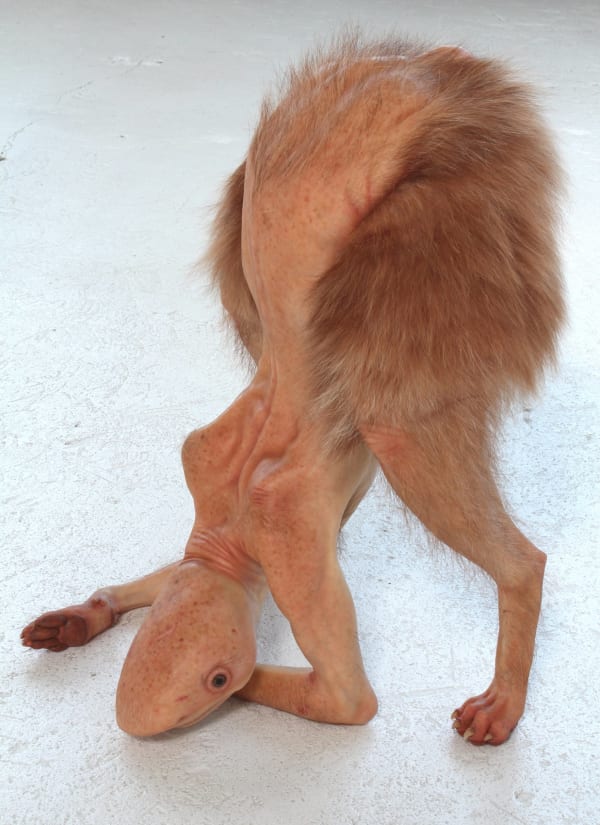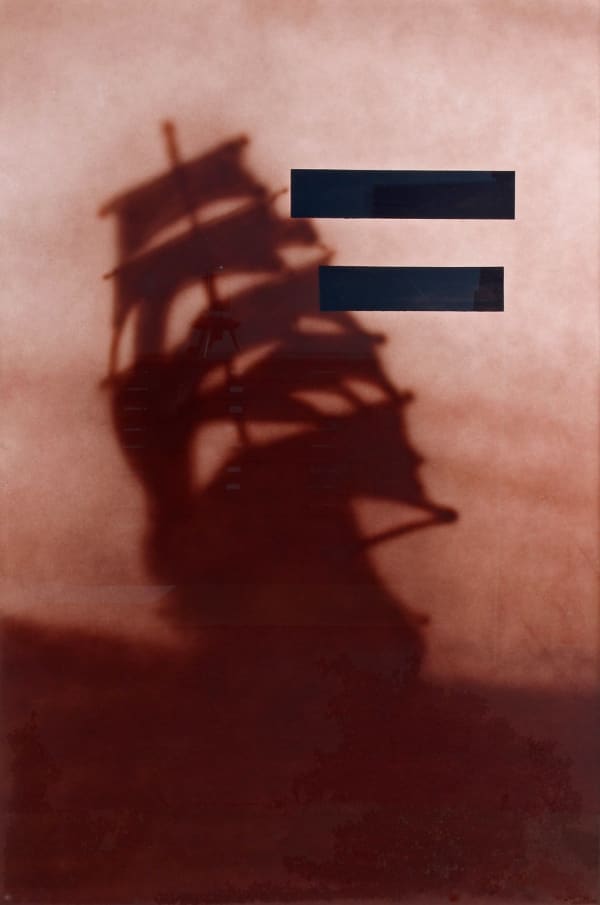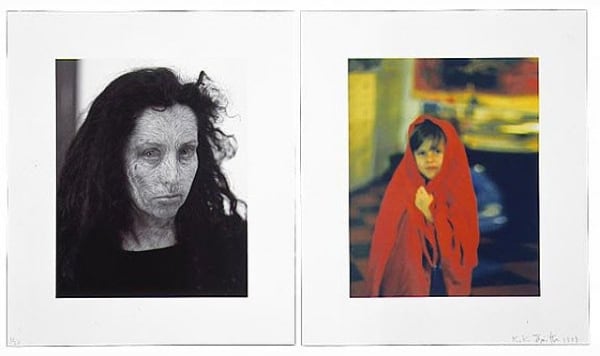Call of the Wild: Hawkinson, Jensen, Light, Piccinini, Rath, Beuys, Ruscha, Smith, Wietz
A companion exhibition to Christian Houge’s photographs, the group show Call of the Wild features work that reflects our primal, tenacious urge to explore the remote corners of the world, and the simultaneous drives to conquer and embrace nature. Artists include Joseph Beuys, Tim Hawkinson, Birgit Jensen, Michael Light, Patricia Piccinini, Alan Rath, Ed Ruscha, Kiki Smith and Helmut Wietz.
Performed at the Rene Block Gallery in New York in 1974, Joseph Beuys’ action, “I Like America and America Likes Me,” exemplifies the yearning to embrace the savage, untamed, and instinctual. For five days Beuys remained confined in a room, interacting with a live coyote using symbolic props and gestures. The 37-minute film by Helmut Wietz documenting the performance reveals alternating moments of harmonious co-existence and ominous threat between human and animal.
The shadowy image of a tall ship in Ed Ruscha’s “Homeward Bound” calls up associations of the golden age of voyage and adventure, while Birgit Jensen’s painting, “Sagarmatha,” refers to Mt. Everest, the ultimate aspiration of any mountaineer. Both works play on idealized notions of adventure that ignore the likelihood of tragic consequences. Michael Light’s FULL MOON series of photographs depicting NASA’s first forays into space points to our fierce determination to conquer new frontiers under the most adverse conditions.
Tim Hawkinson’s sculpture “Scout” takes the form of the fringed buckskin outfit worn by Davy Crockett in the TV and movie vernacular of the 1960s. Not only does it speak to Hollywood’s romanticized notions of exploration, but also to the role of the senses in discovery. Proportioned as a sensory homunculus, Scout is a distorted scale model reflecting the relative number of nerve endings in different parts of the human body.
The work of Patricia Piccinini also deals with the mutant body. Her hyper-realistic sculptures envision transgenic, humanoid constructs – eerily lifelike hybrids that are both repellant and loveable. Like Piccinini, Kiki Smith’s works often merge human and animal forms. The combination of woman and wolf is a frequent occurrence, sometimes in altered versions of the story of Little Red Riding Hood as one of harmonious union.
Alan Rath’s robotic sculptures made with feathers, speakers, and custom electronics are feats of engineering genius. Their uncannily animate qualities point to our fascination with the power to engineer life itself, as evidenced by continuing advances in biotechnology, and the increasingly blurred boundaries between the natural and the artificial.
-
 Tim HawkinsonScout, 2006-2007cardboard, box strapping and urethane foam69 1/2 x 103 x 68 inches
Tim HawkinsonScout, 2006-2007cardboard, box strapping and urethane foam69 1/2 x 103 x 68 inches -
 Joseph BeuysI Like America and America Likes Me, 1974documented and edited on 16mm film by Helmut Wietz
Joseph BeuysI Like America and America Likes Me, 1974documented and edited on 16mm film by Helmut Wietz
DVD with sound, 37 minuteslicense to exhibit in perpetuity -
 Christian HougeUntitled 17 (Shadow Within), Norway, 2010ink on Canson Baryta paper47 x 33 in
Christian HougeUntitled 17 (Shadow Within), Norway, 2010ink on Canson Baryta paper47 x 33 in
119.4 x 83.8 cm -

-

-

-
 Michael LightFULL MOON #69: Alan Bean collects sample of lunar soil; Photographed by Charles Conrad, Apollo 12, November 14-24, 1969, 1999monochrome type C print24.5 x 24.5 inches
Michael LightFULL MOON #69: Alan Bean collects sample of lunar soil; Photographed by Charles Conrad, Apollo 12, November 14-24, 1969, 1999monochrome type C print24.5 x 24.5 inches
44/50 -

-
 Birgit JensenSAGARMATHA, 2009acrylic on canvas78 3/4 x 66 7/8 inches
Birgit JensenSAGARMATHA, 2009acrylic on canvas78 3/4 x 66 7/8 inches
200 x 170 cm -
 Patricia PiccininiBottom Feeder, 2009silicone, fiberglass, steel, fox fur17 3/4 x 15 3/4 x 26 inches/45.1 x 40 x 66 cm
Patricia PiccininiBottom Feeder, 2009silicone, fiberglass, steel, fox fur17 3/4 x 15 3/4 x 26 inches/45.1 x 40 x 66 cm -

-


















